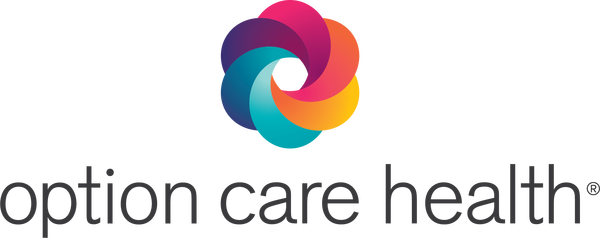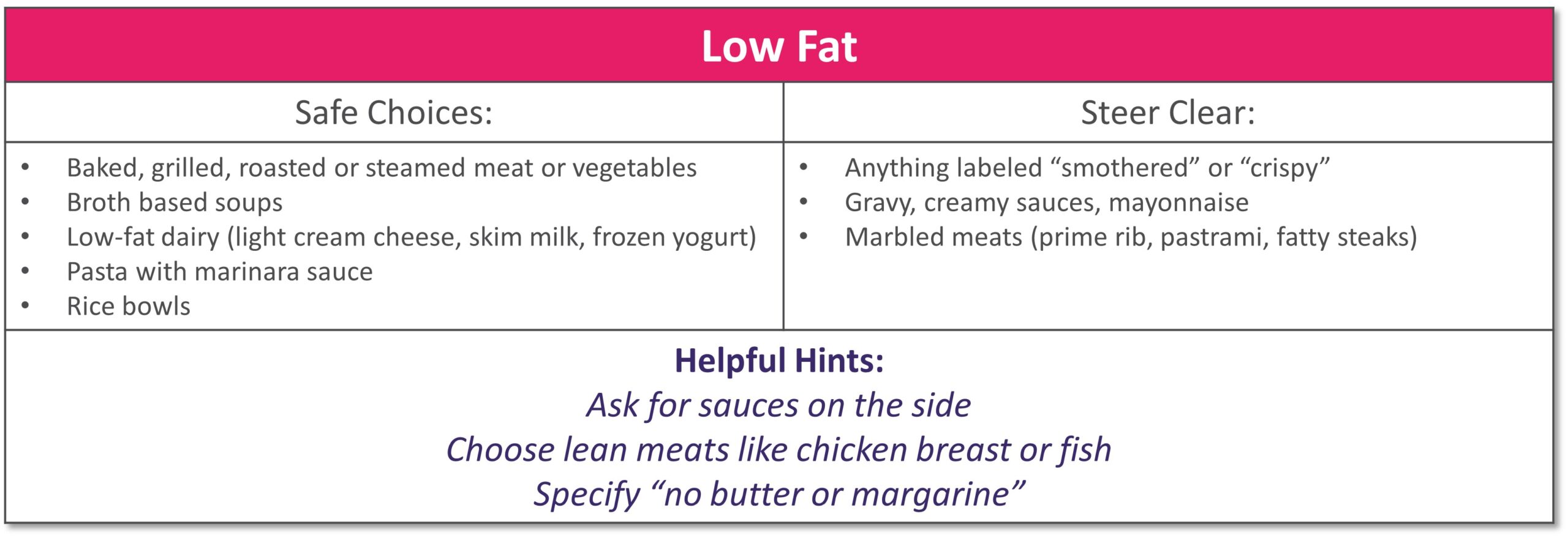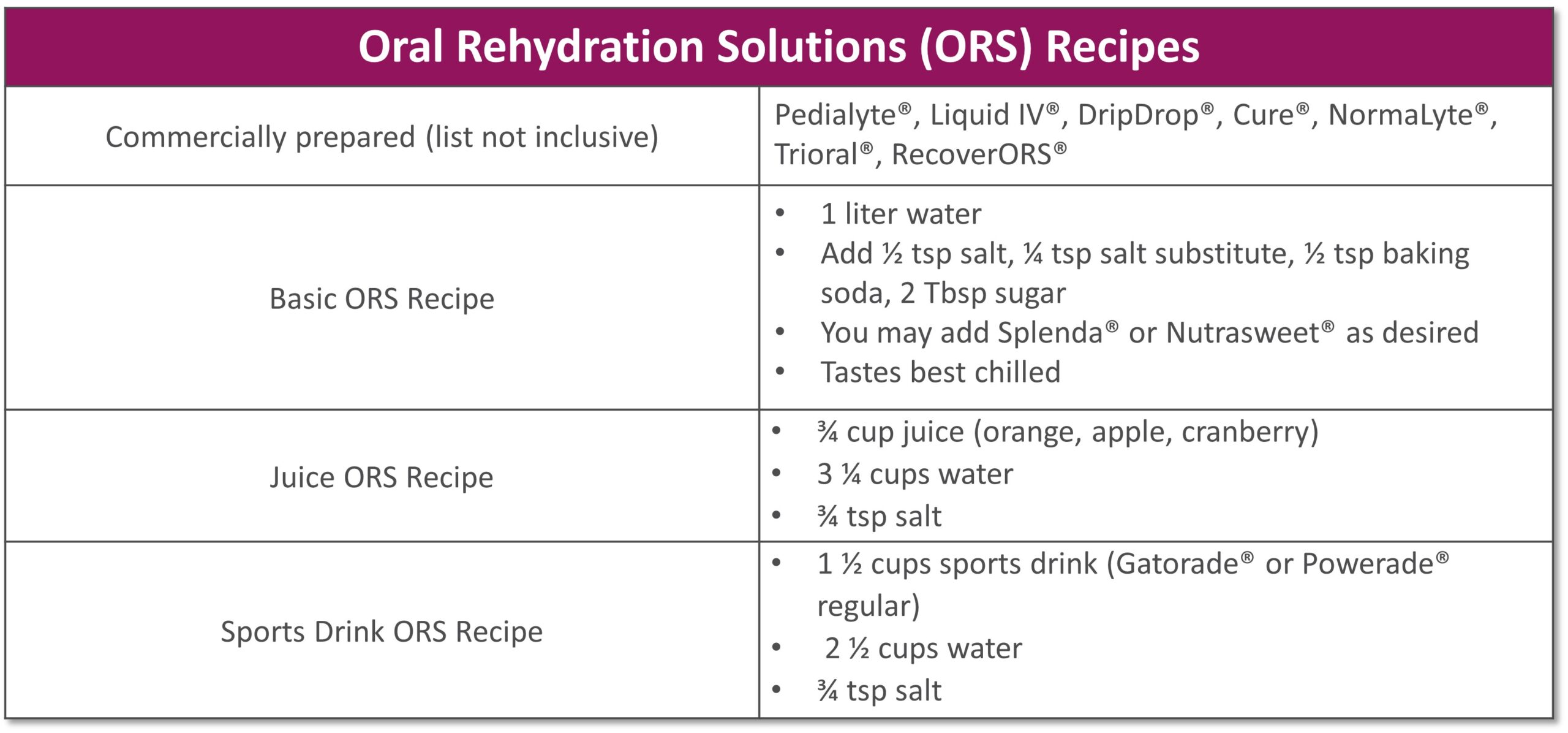
Provider
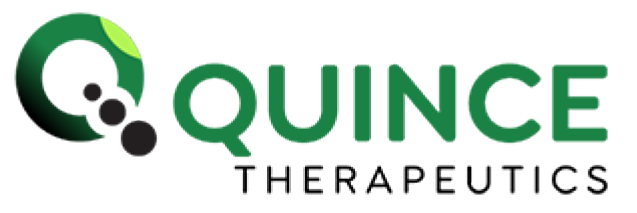
Quince Therapeutics Selects Option Care Health as Specialty Infusion Therapy Provider for Administration of Lead Asset eDSP
August 7, 2025 (PDF Version)
Provides access to broad-reaching nationwide network of specialty pharmacy and ambulatory infusion suites across the U.S.
SOUTH SAN FRANCISCO, Calif. & BANNOCKBURN, Ill.–(BUSINESS WIRE)–Aug. 7, 2025– Quince Therapeutics, Inc. (Nasdaq: QNCX), a
late-stage biotechnology company dedicated to unlocking the power of a patient’s own biology for the treatment of rare diseases, today announced
that it has formed a strategic relationship with Option Care Health, Inc. (Nasdaq: OPCH), the nation’s largest independent provider of home and
ambulatory infusion services, to support the commercial development and efficient launch of Quince’s lead asset, encapsulated dexamethasone
sodium phosphate (eDSP) in the U.S., assuming positive study results and subsequent regulatory approval.
The strategic relationship will leverage Option Care Health’s robust network of specialty pharmacies and ambulatory infusion suites to provide for the
administration of eDSP in an effective and efficient way while delivering this innovative treatment to patients. With a national footprint of more than 90
full-service pharmacies and 180-plus ambulatory infusion suites located across the U.S., Option Care Health is well positioned to dramatically
enhance Quince’s ability to provide patients with Ataxia-Telangiectasia (A-T) access to eDSP treatment, including greater geographic flexibility to
match patient locations and eDSP administration needs, an improved and standardized patient journey with higher control and consistency across
eDSP administration sites, the benefit of contracting with a single provider versus multiple individual academic centers of excellence, and scalability to
treat patients in additional targeted indications such as Duchenne muscular dystrophy (DMD). Additionally, the engagement will be supported by
Option Care Health’s comprehensive suite of enhanced service capabilities, including third-party logistics (3PL) and inventory distribution
management, program management, customized patient registration and hub support, clinician-delivered services, physician reporting, and data
collection and reporting.
Charles Ryan, J.D., Ph.D., Quince’s President who manages several departments including Commercial, said, “We are very pleased to enter into a
strategic partnership with Option Care Health that is designed to greatly improve the patient journey while also establishing an effective and efficient
commercialization pathway for our highly innovative lead asset, eDSP. Option Care Health is a strong partner with a deep understanding of the
complexities of rare disease treatments. We look forward to working together to leverage all the benefits of its nationwide integrated care platform of
specialty pharmacy, infusion suites, and nursing services for the benefit of patients with A-T.”
Eric Daugherty, Senior Vice President, Biopharma Relations, of Option Care Health, said, “As a leading provider in the treatment of rare and orphan
diseases, our organization is honored to have been selected by Quince as its specialty infusion therapy partner. Together, we are committed to making
their novel eDSP asset accessible for patients with A-T across the U.S. as Quince readies for commercial launch and ultimately looks to engage
providers and payers in a seamless way.”
About Quince Therapeutics
Quince Therapeutics, Inc. (Nasdaq: QNCX) is a late-stage biotechnology company dedicated to unlocking the power of a patient’s own biology for the
treatment of rare diseases. For more information on the company and its latest news, visit www.quincetx.com and follow Quince on social media
platforms LinkedIn, Facebook, X, and YouTube.
Forward-looking Statements
Statements in this news release contain “forward-looking statements” within the meaning of the Private Securities Litigation Reform Act of 1995 as
contained in Section 27A of the Securities Act of 1933, as amended, and Section 21E of the Securities Exchange Act of 1934, as amended, which are
subject to the “safe harbor” created by those sections. All statements, other than statements of historical facts, may be forward-looking statements.
Forward-looking statements contained in this news release may be identified by the use of words such as “believe,” “may,” “should,” “expect,”
“anticipate,” “plan,” “believe,” “estimated,” “potential,” “intend,” “will,” “can,” “seek,” or other similar words. Examples of forward-looking statements
include, among others, statements relating to the benefits of the strategic partnership with Option Care, including improved patient access and other
commercial development activities; current and future clinical development and regulatory approval of eDSP, including for the potential treatment of
Ataxia-Telangiectasia (A-T), Duchenne muscular dystrophy (DMD), and other potential indications; the strategic development path for eDSP; planned
regulatory agency submissions and clinical trials and timeline, prospects, and milestone expectations; and the potential benefits of eDSP and the
company’s market opportunity. Forward-looking statements are based on Quince’s current expectations and are subject to inherent uncertainties,
risks, and assumptions that are difficult to predict and could cause actual results to differ materially from what the company expects. Further, certain
forward-looking statements are based on assumptions as to future events that may not prove to be accurate. Factors that could cause actual results to
differ include, but are not limited to, the risks and uncertainties described in the section titled “Risk Factors” in the company’s Quarterly Report on Form
10-Q filed with the Securities and Exchange Commission (SEC) on May 13, 2025, and other reports as filed with the SEC. Forward-looking statements
contained in this news release are made as of this date, and Quince undertakes no duty to update such information except as required under
applicable law.
View source version on businesswire.com: https://www.businesswire.com/news/home/20250807215445/en/
Media & Investor Contact:
Stacy Roughan
Quince Therapeutics, Inc.
Vice President, Corporate Communications & Investor Relations
ir@quincetx.com
Source: Quince Therapeutics, Inc.

Provider
Gastroparesis refers to a delay in emptying stomach contents. Symptoms often include feeling full after eating a meal, or even a small amount of food, as well as nausea, vomiting, bloating or abdominal pain. The causes of gastroparesis may include diabetes mellitus, complications after surgery, kidney disease, certain medications, thyroid disorders, cancer, among others.
The following tips are intended to reduce symptoms and help maintain adequate nutrition.
|
Mealtime
|
||
|
Foods
|
|
|
Fluids
- Stay hydrated. Most adults need 6-10 cups of water per day. Sip slowly throughout the day.
- Drink fluids with meals, however; be sure not to fill up on liquids
- Avoid carbonated beverages as they can cause bloating
Other
- Avoid alcohol as it can affect stomach emptying
- Foods that are acidic, spicy, or contain caffeine or mint may increase acid reflux
- Keep blood sugars under control if you have diabetes
- Keep a food diary to track your intake and find foods that are best tolerated
- Exercise may increase stomach emptying and reduce symptoms. Walking after meals is suggested.
See below for help in choosing more optimal foods from each food group:
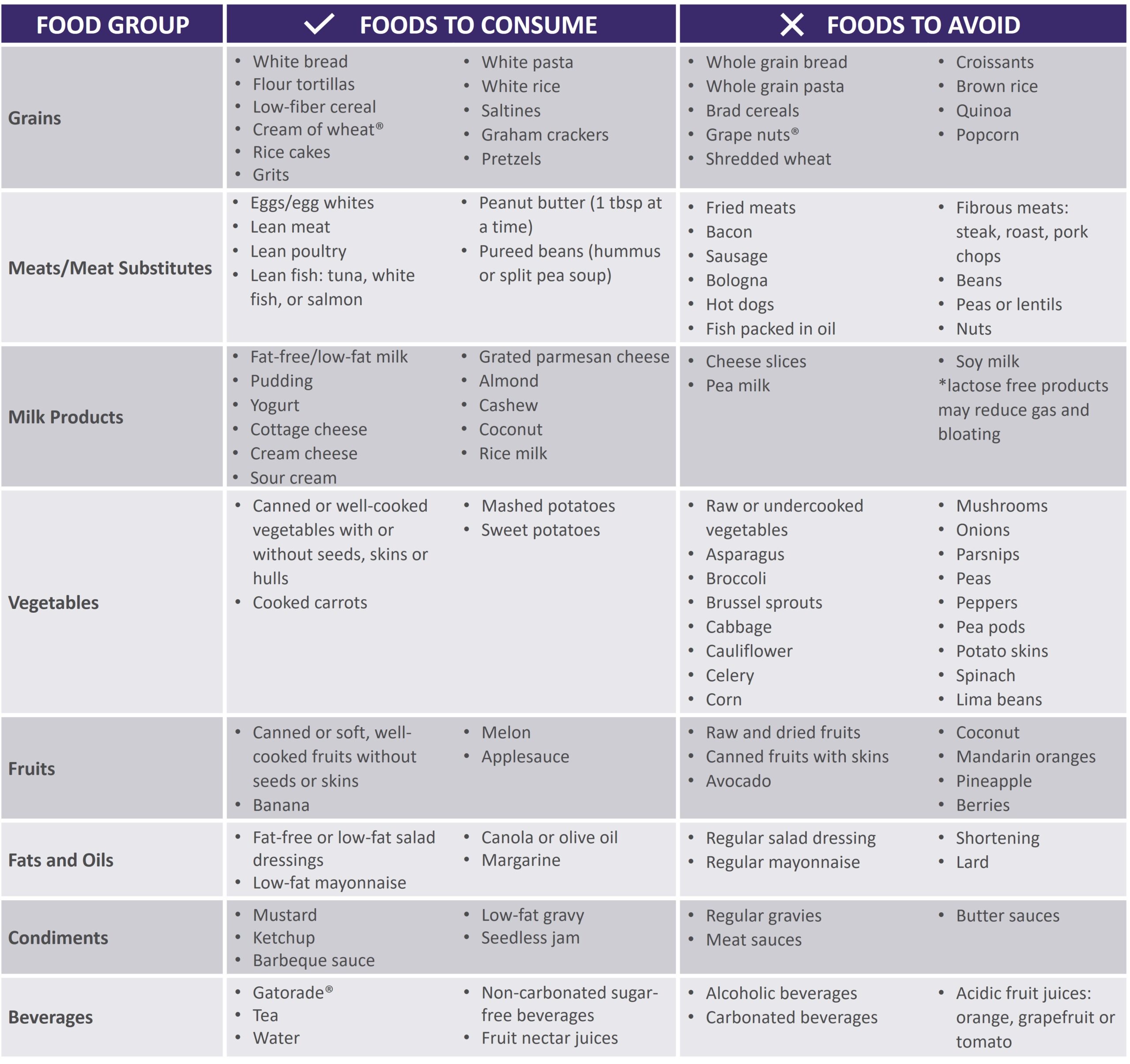 |
|
Gastroparesis Sample Menus |
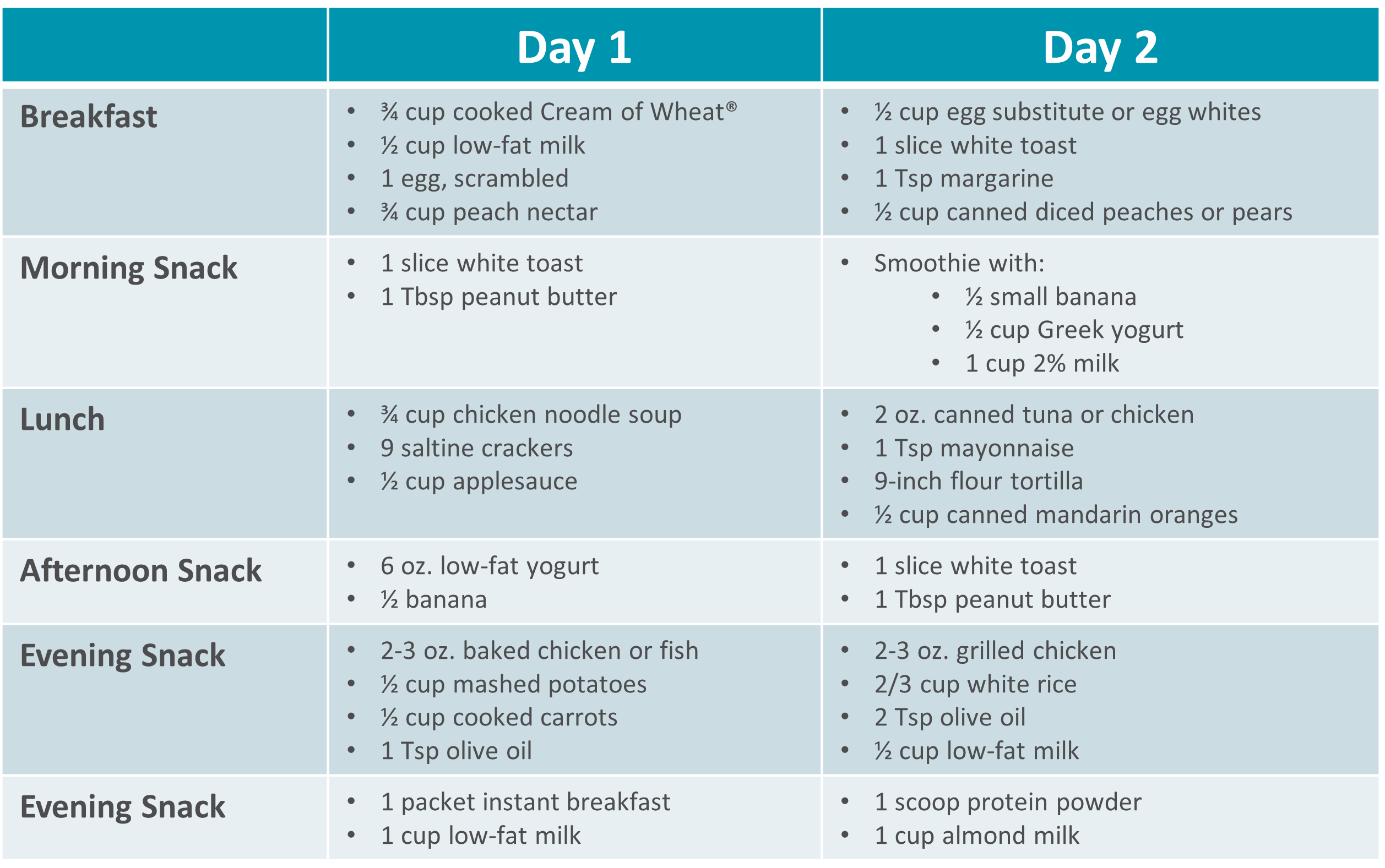 |
Please visit Restore+ to learn more about the nutrition support services offered by Option Care Health.
*This material is for informational purposes only. It does not replace the advice or counsel of a healthcare professional. Please consult with your Registered Dietitian for more detailed, individualized information.

Provider
Dining out at restaurants is a nice treat but also challenging when trying to stick with your therapeutic diet, especially with gastrointestinal diseases. Most restaurants have menus and nutritional information available online. Restaurants are not required to have nutrition information available if they have less than 20 locations. Follow these tips to navigate eating out if you have specialized nutrition needs.
GENERAL TIPS:
- Research the menu online
- Pick a cuisine you tolerate
- Ask server for nutritional information or ingredients if not listed on the menu
- Do NOT be afraid to ask to customize the meal or ask for specific changes
- Communicate with wait staff if you have a food allergy or intolerance
- HAVE A PLAN AND STICK WITH IT!
|
|
|
|
|
|
|
|
|
|
|
|
|
Please visit Restore+ to learn more about the nutrition support services offered by Option Care Health. *This material is for informational purposes only. It does not replace the advice or counsel of a healthcare professional. Please consult with your Registered Dietitian for more detailed, individualized information. |

Provider
Short bowel syndrome (SBS), or intestinal failure, is a condition in which your body is unable to absorb enough nutrients from foods and fluids you consume. This can occur after a surgical resection or damage to your intestines. Symptoms and absorption vary by individual based on the amount and health of the remaining intestine. Symptoms of SBS can include diarrhea, dehydration, electrolyte abnormalities, and weight loss.
The following tips are intended to maximize absorption, improve your nutritional status and reduce dependence on parenteral nutrition.
- Mealtime
- Eat small, frequent meals (6-8 per day)
- Foods
- Eat protein at all meals: eggs, creamy peanut butter, chicken, fish, beef, tofu
- Choose complex carbohydrates such as bread, pasta, rice, and potatoes
- Limit raw vegetables to small amounts
- Avoid fruits with skin or edible seeds
- Limit raw fruits to very small portion twice a day
- Increase your soluble fiber to thicken output with foods such as bananas, applesauce, rice, oatmeal or use of soluble fiber supplements
- Avoid high fat foods such as fried foods if your colon is intact
- Use caution with dairy products – lactose intolerance is common with SBS
- Avoid concentrated sweets such as candy, desserts, and juice
- Avoid foods artificially sweetened with sorbitol or mannitol (Splenda® is okay)
- Fluids
- Drink isotonic fluids (with electrolytes), ideally oral rehydration solutions (see recipes below)
- Do not drink fluids with meals as it increases how quickly food passes through
- Limit to 4 oz. fluid during your meal to allow your food to be best absorbed
- Drink ½ hour before or 2 hours after eating
- If you do not have your colon, your fluid losses will be higher
- Other
- If prescribed by your doctor, take antidiarrheal medication ½ hour before meals
- Salty foods such as pretzels or soups are usually well tolerated and help absorb fluid
- Avoid caffeine and alcohol
See below for help in choosing more optimal foods from each food group:
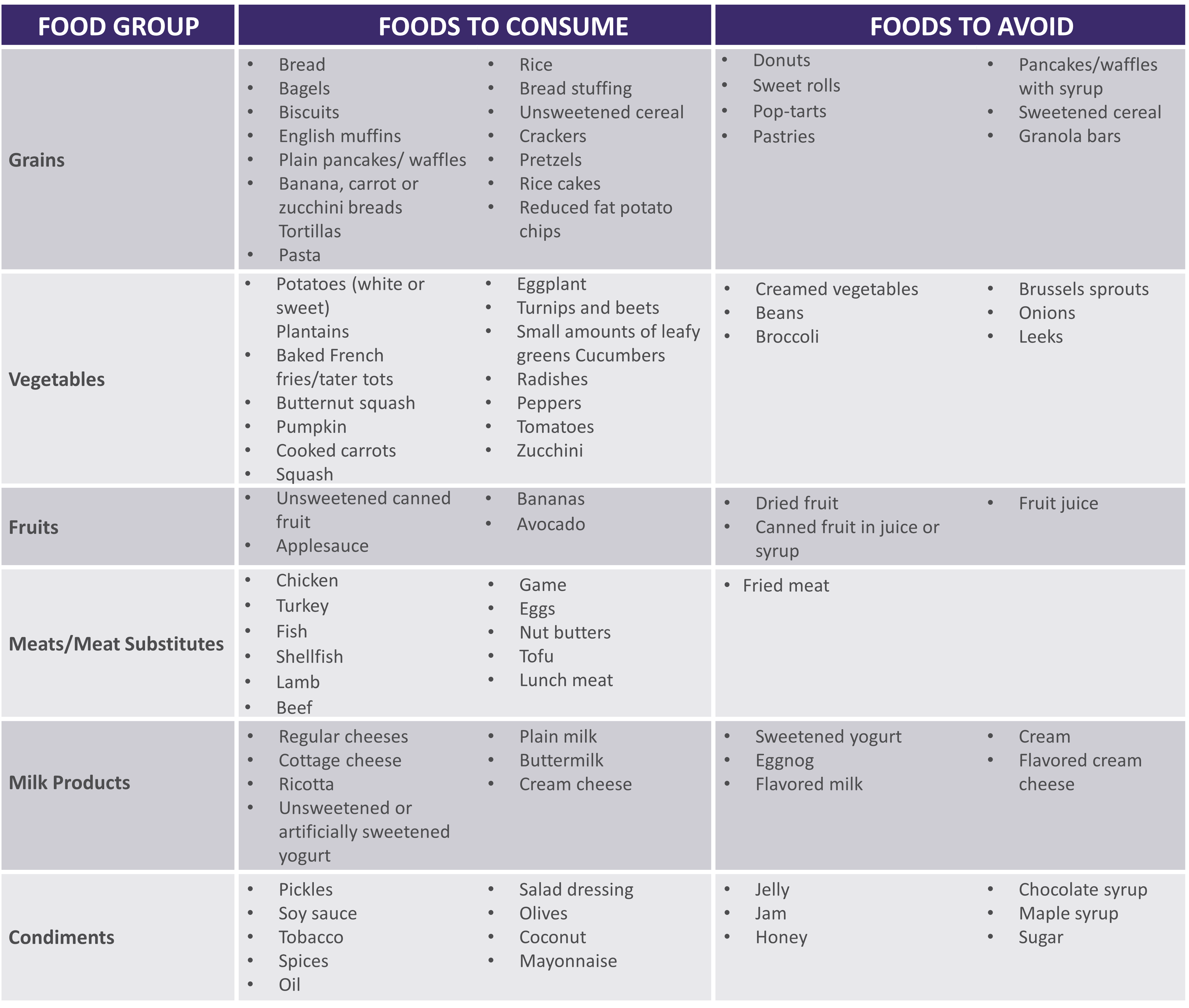 |
|
|
|
**For homemade ORS, discard after 24 hours if not consumed **Visit for more recipes: https://optioncarehealth.com/patients/resources/sbs-friendly-recipes |
SBS Sample Menu |
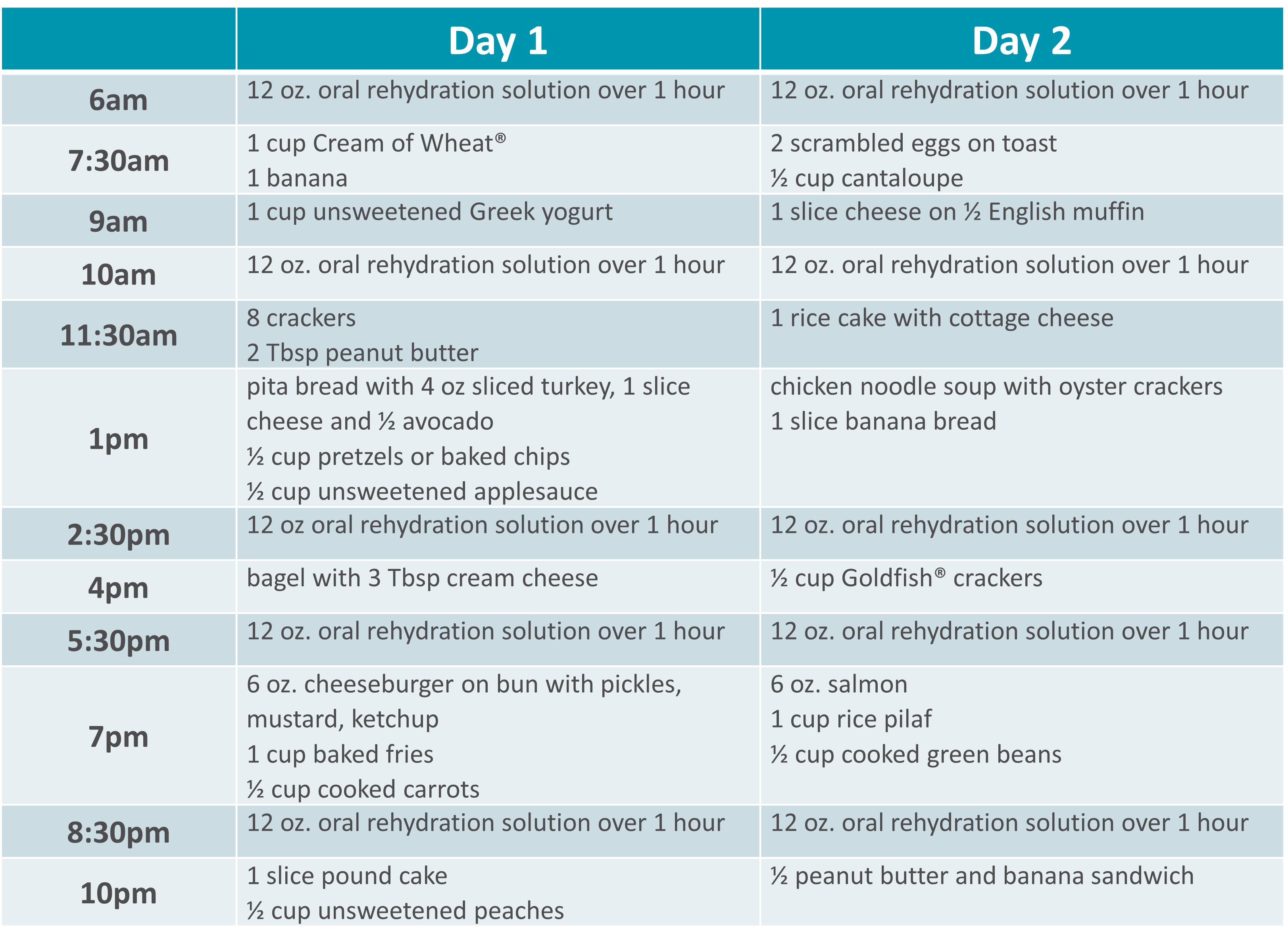 |
Please visit Restore+ to learn more about the nutrition support services offered by Option Care Health.
*This material is for informational purposes only. It does not replace the advice or counsel of a healthcare professional. Please consult with your Registered Dietitian for more detailed, individualized information.

Provider
As a leading healthcare provider, we recognize our role and our responsibility to protect the health and safety of our patients, customers, team members and community. Option Care Health is mandating all leaders be fully vaccinated by September 30, 2021 and all patient and customer-facing team members be fully vaccinated by October 15, 2021.
“Our mission is to transform healthcare while delivering hope to our patients and their families,” said John Rademacher, Chief Executive Officer. “We believe our single largest contribution to eradicating COVID-19 is through vaccination. By receiving the vaccine, we are becoming a part of the solution. Each one of us at Option Care Health plays a critical role in our purpose of providing extraordinary care that changes lives.”
Option Care Health complies with applicable federal, state and local laws and will evaluate exceptions to the vaccine requirement due to a medical condition or strongly held religious beliefs.

Provider
BATON ROUGE, La., and BANNOCKBURN, Ill., Jan. 05, 2021 (GLOBE NEWSWIRE) — Amedisys, Inc. (NASDAQ: AMED), a leading provider of home health, hospice and personal care, and Option Care Health Inc. (NASDAQ: OPCH), the nation’s largest independent home and alternate site infusion services provider, are collaborating on providing COVID antibody infusion therapy within skilled nursing and assisted living facilities, collectively referred to as “long term care facilities.” The U.S Food and Drug Administration (FDA) has issued Emergency Use Authorizations (EUAs) to both Eli Lilly and Regeneron for their investigational neutralizing antibody therapies to treat mild to moderate COVID-19 in adults and pediatrics who are at high risk for progressing to severe COVID-19 symptoms or hospitalization.
On December 8, 2020, the National Home Infusion Association (NHIA) announced it had launched a pilot program with Operation Warp Speed and the department of Health and Human Services to expand access to Bamlanivimab for COVID-19-positive eligible patients residing in long-term care facilities. As an active member of the NHIA, Option Care Health agreed to participate in the pilot program to help service this vulnerable population.
Through the collaboration, which will initially be piloted in Indianapolis and Valparaiso, Indiana markets, with potential to scale to other markets, as appropriate, Amedisys and Option Care Health will coordinate to expeditiously provide care to long-term care facility residents. This innovative service model draws on the strengths and capabilities of both organizations and leverages clinical resources in the most efficient way to ensure expanded access to this difficult-to-serve population. Through its Hospice division, Amedisys will oversee the on-site care coordination for residents through their expansive clinical team. Option Care Health will leverage its pharmacy network operations to provide critical clinical pharmacy oversight and will distribute Bamlanivimab through its national network of pharmacies.
John Rademacher, Chief Executive Officer of Option Care Health, stated, “We are proud to collaborate with Amedisys, a leader in home health and hospice services, along with NHIA and leaders of Operation Warp Speed, to expand access to vital therapies for one of the most vulnerable populations. Combining the extraordinary capabilities of two industry leaders to solve a critical healthcare challenge is truly humbling.”
“We have experience from being on the frontlines and caring for more than 12,500 COVID 19-positive patients,” stated Paul Kusserow, President and Chief Executive Officer of Amedisys. “We know how important innovative solutions are for caring for those who need our services the most, and this is exactly the type of partnerships in which Amedisys wants to be involved to help our country make it through this pandemic. We’re extremely honored to play our part alongside Option Care Health, NHIA and Operation Warp Speed.”
About Amedisys
Amedisys, Inc. is a leading healthcare at home company delivering personalized home health, hospice and personal care. Amedisys is focused on delivering the care that is best for our patients, whether that is home-based personal care; recovery and rehabilitation after an operation or injury; care focused on empowering them to manage a chronic disease; or hospice care at the end of life. More than 2,600 hospitals and 67,000 physicians nationwide have chosen Amedisys as a partner in post-acute care. Founded in 1982, headquartered in Baton Rouge, LA with an executive office in Nashville, Tenn., Amedisys is a publicly held company. With 21,000 employees in 514 care centers within 39 states and the District of Columbia, Amedisys is dedicated to delivering the highest quality of care to the doorsteps of more than 415,000 patients and clients in need every year. For more information about the Company, please visit: www.amedisys.com.
About Option Care Health
Option Care Health is the nation’s largest independent provider of home and alternate site infusion services. With over 5,000 teammates, including approximately 2,900 clinicians, we work compassionately to elevate standards of care for patients with acute and chronic conditions in all 50 states. Through our clinical leadership, expertise and national scale, Option Care Health is reimagining the infusion care experience for patients, customers and teammates.
Forward-Looking Statements:
When included in this press release, words like “believes,” “belief,” “expects,” “plans,” “anticipates,” “intends,” “projects,” “estimates,” “may,” “might,” “would,” “should,” “will” and similar expressions are intended to identify forward-looking statements as defined by the Private Securities Litigation Reform Act of 1995. These forward-looking statements involve a variety of risks and uncertainties that could cause actual results to differ materially from those described therein. These risks and uncertainties include, but are not limited to the following: the impact of the novel coronavirus pandemic (“COVID-19”), including the measures that have been and may be taken by governmental authorities to mitigate it, on our business, financial condition and results of operations, changes in or our failure to comply with existing federal and state laws or regulations or the inability to comply with new government regulations on a timely basis, changes in Medicare and other medical payment levels, our ability to open care centers, acquire additional care centers and integrate and operate these care centers effectively, competition in the healthcare industry, changes in the case mix of patients and payment methodologies, changes in estimates and judgments associated with critical accounting policies, our ability to maintain or establish new patient referral sources, our ability to attract and retain qualified personnel, our ability to keep our patients and employees safe, changes in payments and covered services by federal and state governments, future cost containment initiatives undertaken by third-party payors, our access to financing, our ability to meet debt service requirements and comply with covenants in debt agreements, business disruptions due to natural disasters or acts of terrorism, widespread protest or civil unrest, our ability to integrate, manage and keep our information systems secure, our ability to realize the anticipated benefits of acquisitions, and changes in law or developments with respect to any litigation relating to the Company, including various other matters, many of which are beyond our control.
Because forward-looking statements are inherently subject to risks and uncertainties, some of which cannot be predicted or quantified, you should not rely on any forward-looking statement as a prediction of future events. We expressly disclaim any obligation or undertaking and we do not intend to release publicly any updates or changes in our expectations concerning the forward-looking statements or any changes in events, conditions or circumstances upon which any forward-looking statement may be based, except as required by law.
For Investor Inquiries:
Bob East, Asher Dewhurst, Jordan Kohnstam
Westwicke
443-213-0500
optioncarehealth@westwicke.com

Provider
October 18-24 is National Pharmacy Week. Each year we celebrate Pharmacy Week to acknowledge the invaluable contributions that pharmacists and technicians make to improve patient care throughout the care spectrum. We recently sat down with a few members of our pharmacy team to learn more about their experience in pharmacy and working at Option Care Health. Keep reading to learn more about:
- Jamie Broome, Pharmacy Technician Supervisor, St. Louis, MO
- Jessica-Anne Chelbda, Certified Pharmacy Technician Supervisor, Providence, RI
- Brad Van Egdom, Compounding Pharmacy Technician, Lincoln, NE
- Constantine (Gus) Vergidis, Pharmacy Director, New York, NY
OCH: Tell us about how you chose to begin your career in pharmacy and how you came to work in home infusion pharmacy?
JC: Prior to working for OCH, I worked for a long-term care facility where we would bubble pack medications. We also had an IV room which is where my compounding journey started. It was very different than what we compound here. The process was more simplistic, comprised mainly of syringes and easy bags of medication. When I started at OCH, I was introduced to all kinds of administration methods that I had never seen before because home care is very different than in a long-term care facility where someone is taking care of you. In that environment, I was dealing mostly with nurses who would infuse the medication for the patient. I believe home infusion is where I would like to settle in my career, it’s by far my favorite pharmacy endeavor that I’ve come across in my ten years of experience.
JB: I began my career as a pharmacy technician in a hospital. I worked at a couple of different hospitals and a former colleague of mine called me about an opening at OCH. I wasn’t looking for a job at the time, but it seemed like an interesting opportunity. I really like working in both the cleanroom and in the hospital. I had never heard of a home infusion pharmacy before but it was a great opportunity and I’m glad I took it.
CV: I began my pharmacy career in home infusion. I actually began my career as a pharmacy intern at Rite-Aid but accepted my first role at Option Care Health within the first year after obtaining my license as a staff pharmacist. Pharmacy school is a long commitment and retail pharmacy doesn’t lend itself to using all of the education I received when becoming a Doctor of Pharmacy. In retail, you only get to see one part of the patient’s picture and with home infusion, you get to see the entire picture of the patient’s health journey. So you’re able to track their progress, ensure that therapy is working, and help them transition off of service because they’ve gotten better.
BV: I’m the one who’s making the actual medication so there’s a lot on my shoulders. I have to make sure I’m making the product accurately and safely. I’m thinking of the patients when I’m doing this –what if it was my mom or dad, grandma, or grandpa?– I’d want it to be as perfect and safe as possible. I try to be very detailed and ensure there are no issues or problems when compounding every drug.
OCH: What made you decide to become a pharmacy technician/pharmacist?
JC: About ten years ago I was going to nursing school, but then life happened. My plans changed and I was doing some research on different fields in healthcare that I would enjoy. I was looking for something that would be hands-on but would require less face-to-face time with patients. I looked into a pharmacy technician training program and attended Lincoln Technical Institute in Lincoln, RI. That gave me the boost I needed to see that there were very different types of pharmacy roles across the board. It’s more than just a retail pharmacy where you would go pick up your medication – that’s not the only option you have as a pharmacy technician to find work. It seemed to me that there were a lot of different options and that I would be able to navigate my way through those options as I became more experienced until I found something I truly had a passion for.
JB: I was thinking about going to pharmacy school but was concerned with the time commitment and wasn’t sure I’d enjoy it. I started at my community college and decided to transfer in my first semester to pharmacy technician studies instead.
CV: The choice to become a pharmacist was easy. I’ve always wanted to help people, especially the sick and needy. I originally wanted to be a doctor or a lawyer but landed on pharmacy because I’m still able to impact the patient. I was also intrigued by the pharmacy growing up and that transitioned into my career later in life.
BV: I actually started my career in retail and I was asked if I’d want to move into pharmacy which wasn’t something I originally thought I’d be into. I didn’t really have any experience before, but I was looking for something new. Whenever I have the opportunity to challenge myself and try something new, I tend to go after it. So that’s what I did and I ended up really liking it. I ended up looking for something to broaden my horizons and applied here at OCH. I was a little nervous at first because it was an entirely new area of pharmacy but I’ve loved it ever since. Every day is different and it’s more varied than a retail pharmacy. I just really like being here.
OCH: How do you deliver hope to our patients?
JC: I think one of my favorite parts about working with Option Care Health is seeing the patient progress through the compounding process. We compound a lot of pediatric total parenteral nutrition (TPN) at our branch and when I first came to this branch, we had a newborn who needed TPN seven days a week. The newborn’s mother was dealing with high stress and anxiety, and now, it’s been probably two years since the patient started on service with us, and they only need TPN three days a week. Seeing that progress throughout the years is really rewarding. To see someone get better, from somebody who needed TPN seven days a week to sustain their life, to someone who can get their nutrition from a source other than a TPN bag, by eating regular foods and drinking regular drinks, is very rewarding. Watching the required doses drop from seven to three and hearing the confidence in the parents as they become familiar with how to take care of their sick child is just so rewarding.
JB: When we’re making the drugs, we see patient names week after week. We don’t really get to know the patients but we do get to know their names. If we notice we haven’t seen a patient in a couple of weeks, we’ll ask about what’s going on. It’s neat to see pediatric patients get off of services because they’ve improved or they had a transplant and no longer need our services. It’s nice to know that we played a part in them getting better and we made safe medication for them and made a difference in their care.
CV: Delivering hope has always been top-of-mind for myself and the other pharmacists I work with. Providing hope is letting a patient know where they currently stand but also reassuring them that OCH is planning for them to get better and sharing what that looks like. We are delivering the medication for these patients, providing a high standard of care, and making sure they’re receiving appropriate treatment while ensuring their safety at home.
BV: I try to put myself in their shoes. The people we are trying to help every day are ill and they may not have a lot of hope in their situation. So if we can make things easier for them and provide the medication they need on time, they don’t have to worry about that and can count on Option Care Health. That’s how we deliver hope.
OCH: What makes being a pharmacy technician/pharmacist at Option Care Health special?
JC: My favorite part is TPN. I’m able to see the progress in our patients and know that I’m personally impacting their overall health. One of the things I’ve recently had the pleasure of doing is working really closely with our Area Clinical Director (ACD), Craig. All of OCH went through the ACHC accreditation surveys and Craig has been a great resource. He always listens to the technicians, truly takes into consideration any suggestions we may have, best practices, streamlining processes, etc. I’ve been working with him on updating some of the forms that are used in the OCH pharmacy and I have great pride in working with him as our ACD in the Northeast.
JB: There’s a lot of trust between the pharmacist and the pharmacy technician. They oversee our work to ensure it’s accurate, but we are the experts when it comes to compounding the medication. We know the proper way to hold a syringe, we know what typical doses are and we know how to reconstitute meds. If we notice something is unusual, we go to the pharmacist and let them know before moving forward because of our expertise in making IVs.
CV: I have the best leadership at OCH. I can reach out to them for guidance or assistance whenever I need to ensure our branch has everything we need. That great leadership is what makes us special because they truly care about us and always ensure that we have everything to provide extraordinary care for our patients. That’s what really sets us apart.
BV: The different opportunities I have here makes a real difference. I feel like we all mean something to the company and I really appreciate that.
OCH: Tell me about working in a pharmacy setting during the pandemic?
JC: When the pandemic first hit, there was a lot of uncertainty throughout the country. Working in a sterile environment, it honestly became scary. One of the great things OCH did is that they started making sure that each facility was environmentally testing their room more frequently to ensure that our cleaning procedures were working effectively. This way, we ensured that we had removed the possibility of creating any room for additional bacteria to grow. At first, things were quite nerve-wracking but seeing that we’ve been environmentally testing our rooms with no positive cultures on any of these tests really goes to show how thoroughly the technicians pay attention to what they’re doing, and that they’re being extra cautious to ensure everything is sterile. The extra precautions that OCH has put into effect have eased a lot of that worry I had before.
JB: We were very clean before and now we’re cleaning even more. I didn’t even know that was possible! It was really nice to know that I would still have my job. When so many people were uncertain if they would be let go or if they could count on their paycheck, I was thankful to know I had one every week. It was a huge relief that with everything else to worry about, I still had a steady job. We actually received a thank you note from a mom who was worried about how her child would receive our medication and the fact that we took the stress off of her shoulders just felt so good. We were proud to be able to provide the proper patient care throughout all of the uncertainty.
CV: COVID-19 obviously had a huge impact on the world and especially New York City. Being in this area during the pandemic has really changed healthcare, our perspectives on what remains consistent and any questions of what’s to come. We have enacted policies and procedures to keep our team members safe at all times: practicing social distancing and wearing masks to keep ourselves and families safe. Being in the epicenter has really led us to work better together because we’ve realized that we’re coming into work to help people and we’ve come together to support the needs of others throughout the pandemic. I feel fortunate to work on this team in New York and to provide care for our patients every day.
BV: I am really proud of how OCH handled the pandemic. As soon as we had an idea that this was going to be a pretty big deal, we began stocking up on things we’d need to use every day. We began working on updating policies and procedures to not only keep employees safe but patients as well. Option Care Health’s leadership did such a great job preparing and handling the pandemic because it has had little to no impact on my personal life.
OCH: Do you have plans to celebrate Pharmacy Week?
JC: I was thinking here at the CMC we could maybe coordinate our outfits or something fun and out-of-the-box to show we’re united and stand out as a team. We truly enjoy what we do to keep our patients healthy and safe.
JB: Yes, we’re going to paste pictures of the pharmacy staff around the office with their face on a superhero’s body and see how many of our team members can find because we are superheroes and want to recognize our team members as such.
CV: In honor of this monumental year we’ve had, we’re celebrating it as Essential Worker Day because we’ve all played a major role. Obviously, the pharmacists and pharmacy technicians will stand out, but we’re going to recognize the entire branch. Our essential workers came in every day, never skipped a beat to deliver hope for our patients, and made sure we took the proper precautions to keep moving forward throughout this unprecedented time.
BV: I think we’re planning to have a nice lunch with the team. It’s been a little more stressful with everything that’s going on but it’s nice to have a moment to sit back, relax, and just celebrate ourselves.
OCH: What does Pharmacy Strong mean to you?
JC: Being Pharmacy Strong is not an individual thing, a lot of teamwork goes into what we do day in and day out. Including pharmacists, we have to work together every day to ensure that we are doing everything appropriately for our patients’ safety. The teamwork behind the pharmacy is what being “Pharmacy Strong” means to me. We really love what we do here at OCH and with so many moving parts, we all need to work together to make sure our patients have a positive experience.
CV: To me, being “Pharmacy Strong” means that we all work collaboratively as one team with one goal: patients come first. We come together, collaborate, and work for our patients as a team to ensure the best care for our patients.
BV: I think that as a group, we are all strong individuals. When you work in the pharmacy, you could have a lot coming at you from all different directions and the team is outstanding. I can trust everybody and I know we all come in every day and give 100%. There can be a lot of weight on our shoulders but we all jump in to help out and make sure the patient is cared for at the end of the day.
OCH: Do you have any final thoughts to share?
JC: Working for OCH overall, I feel like there is a lot of room for growth. In general, there is a lot of room for growth in pharmacy with a lot of different roles that you can encounter as a technician. Just here at OCH, we have warehouse technicians, pump management technicians, clinical technicians who are contacting patients, and compounding technicians. There are just so many opportunities for a pharmacy technician to perform at OCH and in pharmacy in general. When you find the right one, it’s just so rewarding and there’s no limit to your growth within pharmacy itself.
CV: Passionate people make up this company and we are truly dedicated to providing extraordinary care to all of our patients. We are all here to give the best of ourselves to care for our patients every day and I believe that’s representative of our entire organization.
BV: I think the biggest thing I want to say is that when you’re looking at OCH as a company and potential place to work, it can be intimidating for both pharmacists and pharmacy technicians because it’s unlike anywhere they’ve worked previously. It’s something different every day. You can walk in the door and be proud of where you work and love your job. Take the chance, it’s worth it.

Provider
As the COVID-19 pandemic continues to alter the home-based care industry, changes that agencies were already making to succeed in a value-based care model have taken on a new urgency. Innovative technologies are critical to help prioritize value-based data and seamless transitions to lower-cost care settings.
For both economic and safety reasons, home care plays an increasingly important role in minimizing risk for elderly or otherwise immuno-compromised patients, especially for those who rely on infused drug therapies for chronic, complex conditions. With hospital system capacity spread thin due to the pandemic and elevated concerns about risk of exposure in a health system setting, the imperative for keeping people in the comfort of their own homes is greater than ever.
That is what makes home infusion therapy so appealing.
Home infusion comes with significant benefits, but the industry also faces a new set of challenges due to COVID-19. Adoption of flexible, scalable technology is an important part of the solution to support in-person and virtual operations while building new processes that will chart a course well past the point of the pandemic’s impact.
With its required mix of equipment, complex therapy management and clinical coordination across many health care providers, home infusion creates strain around data tracking and operational efficiencies. To address these challenges, home and alternate site infusion providers need a software platform that is cloud-based and mobile, offers real-time communication and integrates seamlessly with other systems to provide users with a single point of access.
“As the demand for home infusion rises, the need to ensure patient safety and high-quality care will be a key focus,” says Adrian Schauer, founder and CEO of a cloud-based, home health care software provider AlayaCare.
Here are five benefits that cloud-based technology brings to home and alternate site infusion during the pandemic.
Offers easy-to-use technology
For Option Care Health, a partnership with AlayaCare has been just what the doctor ordered. One of the major advantages is the ease of the technology, which was a key selling point for nursing teams accustomed to pen and paper.
“We needed a solution that would be easy to adopt, help us easily shift to a virtual environment and meet the increasing need for data,” says Joan Couden, vice president of nursing for Option Care Health. “The IT match was really important to us. The solution we chose had to fit into the rest of our systems and clinical needs.”
Enhances nurse-pharmacist communication and collaboration
One of the most important relationships for optimizing outcomes in home infusion is between the nurse and the pharmacist. The pharmacist must know everything happening during the care episode, while the nurse must know all of the medications the patient is taking orally as well as what is being compounded and dispensed from the pharmacy.
Previous to its work with AlayaCare, Option Care Health maintained this nurse-pharmacist collaboration through manual processes, which “are always sub-optimal,” Couden says.
Instead, cloud-based technology produces near real-time updates to care plans, moving from the nurse to the pharmacy or the pharmacy to the nurse. Changes to medications or patient response to medications get transferred immediately.
“Now more than ever, post-acute care providers must automate manual business processes to ensure high-quality care, or risk missing out on profitable growth,” Schauer says.
Creates consistent care regardless of setting
In a mobile world, amidst a pandemic and a value-based landscape that rewards care in lower-cost settings, the ability to deliver care in a patient’s home is invaluable, with multiple benefits to both care outcomes and the bottom line.
But the home is not the only location where infusion services are provided. Patients can also receive care in infusion suites. Cloud-based technology offers continuity of care across settings to ensure that the quality of care is the same no matter the setting.
“There are a lot of challenges in a remote, mobile clinical situation. The AlayaCare platform allows for flexible, dynamic adaptation to the way home infusion worked historically and to how it is changing today,” says Brett Michalak, Option Care Health Chief Information Officer. “Everyone can be focused on clinical care for the patient, and not the underlying technology. And that means patient experience and outcomes are highly enabled through this partnership.”
“The technology allows us to focus on providing care in the most efficient way possible,” adds Couden. “We can ensure we are matching the right nurse to the right patient all with a click of a button, helping to minimize travel time and increase patient-facing time.”
Facilitates shift to telehealth
While this technology had great value prior to the COVID-19 pandemic, Option Care Health has seen a boost in its value during the pandemic. Cloud-based technology supports that shift — a shift which is likely to continue to deepen in the coming months.
“The pandemic caused us to look at everything we do differently,” Couden says. “When we started this journey (with AlayaCare), would I have said, ‘Telehealth is something we have to do right now’? I probably would not have. But working in partnership with AlayaCare and our clinical teams, we were able to rapidly and smoothly deploy virtual solutions that really have the ability to change lives for the better, one patient at a time. I believe this is an integral part of how health care will continue to be delivered now and in the future.”
Deploys quickly due to easy integration
One of the top concerns care providers have about new technology systems is workflow. They ask themselves, How long will this take to integrate? The answer from AlayaCare is nearly instantaneous, regardless of what technology a provider already uses.
“AlayaCare allows us to deploy the technology in a rapid manner,” Michalak says. “Competitive platforms don’t provide the integration capabilities, in my opinion, that AlayaCare can provide. The integration of the platform allows for rapid adoption.”
The needs for quick integration and streamlined collaboration are obviously high during COVID-19, but when Option Care went through a merger last year (launching as Option Care Health), the technology from AlayaCare helped the company quickly pivot, too.
“The agile nature of the platform allows us the flexibility to adjust to any evolution in our care environment,” Michalak says. “Whether that’s a merger or a pandemic, we can adapt and deploy the technology optimally to enable our clinicians to focus on care and not on administrative technology. The ease of use and scalability lets our clinicians perform at their highest levels.”
To learn more about how AlayaCare can help your home infusion business, visit AlayaCare.com today.

Provider
BANNOCKBURN, Ill., Sept. 02, 2020 (GLOBE NEWSWIRE) — Option Care Health, Inc. (“Option Care Health”) (NASDAQ: OPCH), the nation’s largest independent provider of home and alternate site infusion services, has been selected to participate in the limited distribution network of VILTEPSO™ (viltolarsen) for patients with Duchenne Muscular Dystrophy (“DMD”) who are amenable to exon 53 skipping therapy. Manufactured by NS Pharma, Inc., Viltepso is the first and only exon 53 skipping therapy to demonstrate an increase in dystrophin in patients as young as four years old.
Viltepso is among a growing number of chronic infusion therapies for neuromuscular disorders that Option Care Health is able to deliver to patients at home or in one of the company’s more than 125 ambulatory infusion suites across the country.
“NS Pharma selected Option Care Health as an option to distribute and administer Viltepso, which offers hope to patients with this devastating disease and their caregivers, because of our reputation of providing extraordinary care,” said Matt Deans, Senior Vice President of Business Development at Option Care Health. “Our demonstrated track record of collaboration with manufacturers to extend infusion services for new therapies to alternate treatment sites, coupled with our personalized clinical care, leads to better outcomes and higher patient satisfaction.”
DMD is an inherited progressive neurological disorder that primarily affects boys because it is located on the X chromosome (male gene). It is caused by genetic mutations that prevent the production of dystrophin, a key protein for supporting muscle health. Symptoms appear as early as two years of age and typically progresses to cardiac and respiratory muscle problems beginning in the patient’s teenage years, leading to serious, life-threatening complications.
Increasing dystrophin as much and as early as possible has become a key goal in the treatment of DMD. Viltepso received an Accelerated Approval by the Food and Drug Administration (FDA) based on an increase in dystrophin in patients with DMD who are amenable to exon 53 skipping therapy; exon 53 skipping is applicable in about 8% of the DMD population.
“We chose to include Option Care Health in our distribution network because of its commitment to providing excellent clinical care and national footprint,” said Gardner Gendron, Chief Commercial Officer at NS Pharma. “Its expertise in providing infusions for complex neuromuscular conditions, broad access to insurance networks and service in all 50 states give us the confidence that our patients will be able to receive Viltepso.”
The recommended dosage of Viltepso is 80mg/kg of body administered intravenously over 60 minutes once weekly by Option Care Health nurses specially trained on the disease and therapy. Option Care Health works closely with providers to develop customized patient care plans and provide regular treatment updates. Patients receive extensive education and can reach experienced clinicians 24/7/365 if they have questions or need support.
About Option Care Health
Option Care Health is the nation’s largest independent provider of home and alternate site infusion services. With over 5,000 teammates, including approximately 2,900 clinicians, we work compassionately to elevate standards of care for patients with acute and chronic conditions in all 50 states. Through our clinical leadership, expertise and national scale, Option Care Health is re-imagining the infusion care experience for patients, customers and employees. To learn more, please visit our website at OptionCareHealth.com.
About NS Pharma, Inc.
NS Pharma, Inc., is a wholly owned subsidiary of Nippon Shinyaku Co., Ltd. For more information, please visit http://www.nspharma.com. NS Pharma and Viltepso are registered trademarks of the Nippon Shinyaku group of companies.
Forward-Looking Statements – Safe Harbor
This press release may contain “forward-looking statements” within the meaning of the safe harbor provisions of the U.S. Private Securities Litigation Reform Act of 1995. Forward-looking statements can be identified by words such as: “anticipate,” “intend,” “plan,” “believe,” “project,” “estimate,” “expect,” “may,” “should,” “will” and similar references to future periods. Examples of forward-looking statements include, among others, statements we may make regarding future revenues, future earnings, regulatory developments, market developments, new products and growth strategies, integration activities and the effects of any of the foregoing on our future results of operations or financial conditions.
Forward-looking statements are neither historical facts nor assurances of future performance. Instead, they are based only on our current beliefs, expectations and assumptions regarding the future of our business, future plans and strategies, projections, anticipated events and trends, the economy and other future conditions. Because forward-looking statements relate to the future, they are subject to inherent uncertainties, risks and changes in circumstances that are difficult to predict and many of which are outside of our control. Our actual results and financial condition may differ materially from those indicated in the forward-looking statements. Important factors that could cause our actual results and financial condition to differ materially from those indicated in the forward-looking statements include, among others, the following: (i) changes in laws and regulations applicable to our business model; (ii) changes in market conditions and receptivity to our services and offerings; (iii) results of litigation; and (iv) the loss of one or more key payers; and (v) the spread and impact of the COVID-19 pandemic. For a detailed discussion of the risk factors that could affect our actual results, please refer to the risk factors identified in our SEC reports, including, but not limited to our Annual Report on Form 10-K and Quarterly Reports on Form 10-Q, as filed with the SEC.
Any forward-looking statement made by us in this press release is based only on information currently available to us and speaks only as of the date on which it is made. We undertake no obligation to publicly update any forward-looking statement, whether written or oral, that may be made from time to time, whether as a result of new information, future developments or otherwise.

